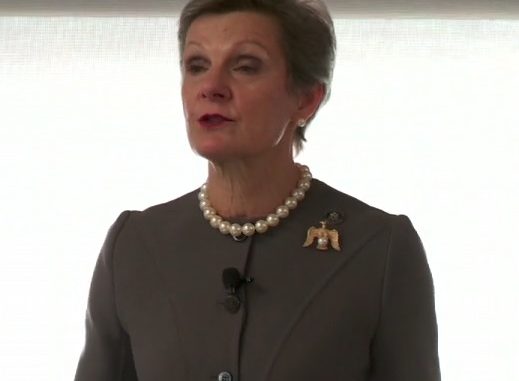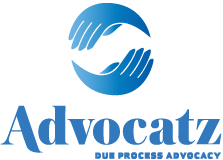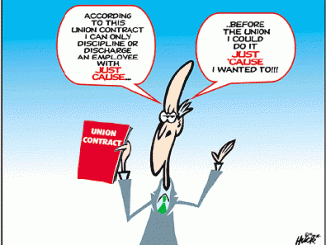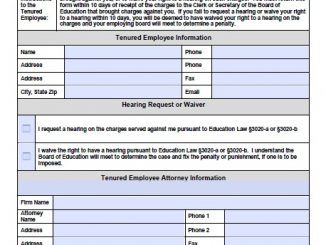
We are advocates for school choice. What this means is, we know that each child is unique in their ability to learn and needs help and support which may be different from any other child. For instance, if a child is diagnosed as having autism, he/she may be able to talk and interact, or not. There are many different manifestations of Autism Spectrum Disorder ASD.
Similarly, a child may be exceptionally gifted, yet have learning difficulties that must be monitored and addressed on an individual level in order for the child to feel free to create and explore new ideas. These children are often called “2e” or “Twice-exceptional“. The New York City Department of Education has no place for these children, despite being given $billions of dollars to do just that by the Federal Government in a contract with the parent called an Individualized Education Plan.
Federal Law mandates the provision of resources to each child, but the Department of Education in New York City – the largest in the United States – would rather keep the money and harm the child. I found this out in 1986 when I heard from the teacher of my oldest daughter that she needed to be evaluated. After the evaluation, I was told that my child was exceptionally gifted, but had auditory processing issues, so my quest began to find out everything I could on 2e children. Along the way, I heard about Impartial Hearings, and I got all the services my daughter needed funded by the NYC Department of Education. It wasn’t easy – more like pulling teeth out of the mouth of the DOE without anesthesia – but I learned a lot about what actually was going on inside the DOE. I started helping other parents get the money.
Unfortunately, after a parent wins the tuition money for a private school, then he/she has to get the DOE to issue a check and the pandemic stopped timely payments legally won. Until Judge Loretta Preska made her ruling. She is quoted below, but I am highlighting it here:
“”It would be backwards indeed if DOE — the ‘public school system that failed to meet the child’s needs in the first place’ — could refuse to fund a student’s placement at a private school ‘simply because that school lacks [DOE’s] stamp of approval,’”
I have copied and posted the entire decision below.
Betsy Combier
betsy.combier@gmail.com
Editor, Advocatz.com
Editor, NYC Rubber Room Reporter
Editor, Parentadvocates.org
Editor, New York Court Corruption
Editor, National Public Voice
Editor, NYC Public Voice
Editor, Inside 3020-a Teacher Trials

by Michael Elsen-Rooney, NY Daily News, February 23, 2021
The city Education Department illegally held up court-ordered tuition reimbursement payments for families of private school students with disabilities during the pandemic, a Manhattan federal judge ruled.
The city is legally obligated to pay private school tuition for special education students it can’t accommodate in public schools.
But the Education Department abruptly halted payments for at least 1,000 students when the pandemic hit last March, demanding their private schools submit remote learning plans for DOE approval before the city released funds, according to legal filings.
That policy resulted in months-long payment delays that forced families to either go out of pocket for tens of thousands of dollars in tuition costs or — if they couldn’t afford it — pull their child out of school until the payments came through, according to advocates and legal papers.
“It’s just been really horrible,” said Mary Fernandes, the parent of a 10-year-old with autism who at one point last year was owed $20,000 in tuition payments from the city. “With COVID, they’ve gotten even worse.”
Ferandes, a case manager at a law firm, has had to open multiple credit cards and borrow off of her retirement plan to keep up with the $3,300-a-month tuition costs at her son’s specialized Manhattan school for students with autism.
“Pretty much my credit has been destroyed,” Fernandes said. “It’s just been non-stop, constant stress.”
One high school student with multiple disabilities was forced to temporarily drop out of her court-approved Manhattan private school for a month last summer because the city failed to deliver its reimbursement payments and the student’s single mother couldn’t front the cost, according to Rebecca Shore, the family’s lawyer.
“This loss was demoralizing for our client, and put at risk her ability to graduate,” said Shore, an attorney with Advocates for Children.
City officials argued they were being fiscally responsible by thoroughly vetting the remote learning plans of the private schools and making sure they were still offering the same level of service before releasing millions of dollars from drained city coffers.
The city “made common-sense adjustments to tuition reimbursements so that private schools wouldn’t be paid for services that weren’t provided during the pandemic, such as busing and food service,” said Education Department spokeswoman Danielle Filson.
But in a sharply-worded decision issued last Friday, Manhattan Federal Judge Loretta Preska admonished city officials for second-guessing legal orders from special education judges.
“It would be backwards indeed if DOE — the ‘public school system that failed to meet the child’s needs in the first place’ — could refuse to fund a student’s placement at a private school ‘simply because that school lacks [DOE’s] stamp of approval,’” Preska wrote.
“The economic bind in which DOE finds itself does not afford it a roving commission to re-evaluate the propriety of Orders that the IDEA (Individual with Disabilities Act) and New York law make plain are final and binding,” Preska continued.
(More Education) NYC to expand student COVID-19 testing program to charter schools following legal battle »
The pandemic-related tuition reimbursement delay is yet another wrinkle for families navigating the maddening journey of securing a city-funded slot in a specialized private school.
The process can take years and involve costly legal services, expensive outside evaluations and frustrating bureaucratic delays — and favors families with time and resources.
Even when families do manage to win a private school placement from a judge in the city’s severely overburdened special education hearing system, it can take months or years to get fully reimbursed for tuition that can exceed $100,000 for a single year.
[More Education] Destroyed Brooklyn elementary school mural celebrating diversity will be recreated »
The city’s slow response to special education court orders is the subject of a nearly two-decade-old class-action lawsuit. In 2011, the Education Department created an entire office to speed up its implementation of court orders — but families and advocates say it hasn’t solved the problem.
Wait time for tuition reimbursement has grown longer in recent years, lawyers and parents say, and the DOE’s pandemic policy exacerbated an already serious problem.
For low-income families, borrowing tens of thousands of dollars to front tuition costs while awaiting city reimbursement isn’t an option.
DOE officials say roughly 130 private schools enrolling about 1,000 students on the city dime were required to submit remote learning plans for city approval last year before officials released tuition payments, though advocates say the number is likely higher.
As of December, about 300 of those students had been approved for full reimbursement, 300 were approved for a reduced reimbursement, and another 400 were still being reviewed, according to court papers.
Education Department spokeswoman Filson said “no student should be denied special education services because of payment delays. We’re committed to improving the impartial hearing process.” The DOE is considering appealing last week’s decision, she added.
“No. 03-CV-9917 (LAP) 02-18-2021 LV, et al., Plaintiffs, v. NEW YORK CITY DEPARTMENT OF EDUCATION, et al., Defendants.” LV v. N.Y.C. Dep’t of Educ., No. 03-CV-9917 (LAP), at *1 (S.D.N.Y. Feb. 18, 2021)
MEMORANDUM & ORDER
“The Individuals with Disabilities Education Act (IDEA or Act) . . . requires States receiving federal funding to make a ‘free appropriate public education’ (FAPE) available to all children with disabilities residing in the State.” Forest Grove Sch. Dist. v. T.A., 557 U.S. 230, 232 (2009) (citations omitted). “In New York, the School District–here the defendant New York City Department of Education [(“DOE”)]–is responsible for complying with the IDEA.” M.H. v. N.Y.C. Dep’t of Educ., 685 F.3d 217, 225 n.4 (2d Cir. 2012). When a child cannot receive a FAPE at a public school, DOE may be required to pay for tuition at a private school. See Sch. Comm. of Burlington v. Dep’t of Educ. of Mass., 471 U.S. 359, 369 (1985).
Plaintiffs are children with disabilities who have obtained administrative orders requiring DOE to pay for all or part of their private-school tuition (“Orders”). This litigation, which has been ongoing for the better part of two decades, concerns DOE’s repeated failures to implement Orders. Those troubles have been compounded by the COVID-19 pandemic, in response to which DOE–citing changed circumstances and a general obligation to safeguard the public coffers–refused to pay tuition to private schools whose remote-learning plans did not receive DOE approval. Because many families and schools simply could not afford the financial burden of attending a private institution, several qualifying children lost their private-school placements or otherwise had their educational services curtailed. Those interruptions in services–at a juncture critical to children’s learning and development–are especially harmful to students with disabilities.
For the purposes of this order, a “remote-learning plan” encompasses both a school’s plans to teach remotely as well as to provide other education-related services to qualifying children with disabilities.
See, e.g., Angela Nelson, How COVID-19 Has Affected Special Education Students, TUFTS NOW (Sept. 29, 2020), https://now.tufts.edu/articles/how-covid-19-has-affected-special-education-students (“While most students have had routines interrupted, the children perhaps most affected by that disruption are special education students.”).
In response to DOE’s (in)actions, Plaintiffs filed, among other things, the instant motion seeking declaratory relief. DOE, the New York City Board of Education, and Dennis M. Walcott (collectively, “Defendants”) oppose the motion. For the reasons and to the extent described below, Plaintiffs’ motion is GRANTED.
(See Notice of Motion for Declaratory Relief, dated Oct. 28, 2020 [dkt. no. 234]; see also Memorandum of Law in Support of Plaintiffs’ Motion for Declaratory Relief (“Pls. Br.”), dated Oct. 28, 2020 [dkt. no. 238]; Reply Memorandum of Law in Support of Plaintiffs’ Motion for Declaratory Relief, dated Dec. 17, 2020 [dkt. no. 241]; Declaration of Erik L. Wilson in Support of Plaintiffs’ Motion for Declaratory Relief (“Wilson Decl.”), dated Oct. 28, 2020 [dkt. no. 236]; Declaration of Rebecca Shore in Support of Plaintiffs’ Motion for Declaratory Relief (“Shore Decl.”), dated Oct. 28, 2020 [dkt. no. 237]; Reply Declaration of Rebecca Shore in Further Support of Plaintiffs’ Motion for Declaratory Relief, dated Dec. 17, 2020 [dkt. no. 242].)
(See Defendants’ Memorandum of Law in Opposition to Plaintiffs’ Motion for Declaratory Relief (“Defs. Br.”), dated Dec. 1, 2020 [dkt. no. 240]; see also Declaration of Sapna Kapoor in Opposition to Plaintiffs’ Motion for Declaratory Relief (“Kapoor Decl.”), dated Dec. 1, 2020 [dkt. no. 239].)
I. Background
Given “the confusing, alphabet-soup nature of IDEA cases brought in New York City,” M.H., 685 F.3d at 225 n.4, it is necessary to outline the governing statutory scheme before diving into the facts.
a. The Statutory Framework
The IDEA requires DOE to provide a FAPE to all New York City students with disabilities. See 20 U.S.C. § 1412(a)(1)(A); M.H., 685 F.3d at 225 n.4. “To ensure that qualifying children receive a FAPE, [DOE] must create an individualized education program (‘IEP’) for each such child.” R.E. ex rel. J.E. v. N.Y.C. Dep’t of Educ., 694 F.3d 167, 175 (2d Cir. 2012). An IEP is a written plan “that describes the specially designed instruction and services that will enable the child to meet stated educational objectives and is reasonably calculated to give educational benefits to the child.” M.W. ex rel. S.W. v. N.Y.C. Dep’t of Educ., 725 F.3d 131, 135 (2d Cir. 2013) (quotation marks omitted).
“The IDEA also grants parents certain procedural rights, including the right to an impartial due process hearing regarding their child’s placement and services.” M.G. v. N.Y.C. Dep’t of Educ., 15 F. Supp. 3d 296, 301 (S.D.N.Y. 2014). “New York has opted for a two-tier administrative system for review of IEPs.” Cave v. E. Meadow Union Free Sch. Dist., 514 F.3d 240, 245 (2d Cir. 2008). “Under the first tier, parents dissatisfied with a proposed IEP may seek review by an impartial hearing officer (‘IHO’).” M.T. ex rel. E.T. v. N.Y.C. Dep’t of Educ., 165 F. Supp. 3d 106, 111 (S.D.N.Y. 2016) (citing N.Y. EDUC. LAW § 4404(1)). “Following the decision of the IHO, an aggrieved party may appeal to a state review officer (‘SRO’).” Id. (citing N.Y. EDUC. LAW § 4404(2)). Thereafter, any party who remains aggrieved can challenge the SRO’s decision in state or federal court. See 20 U.S.C. § 1415(i)(2)(A); N.Y. EDUC. LAW § 4404(3). An administrative order that is not appealed “shall be final.” 20 U.S.C. § 1415(i)(1) (emphasis added).
Even though a child’s educational needs are an urgent matter, IDEA proceedings may take “years to run [their] course–years critical to the child’s development.” Burlington, 471 U.S. at 361. That leaves parents with two practical paths to challenge an IEP. First, they may “keep the[ir] child enrolled in public school” and pursue “compensatory education” as part of the administrative process. Alternatively–and “in light of the irreversibility, in an educational setting, of a child’s lost time”–parents may, unilaterally and at their own financial peril, enroll their child in a private school and then seek reimbursement for the private-school tuition. When any IDEA proceedings are pending, the IDEA’s “stay put” provision provides that the “child is entitled to remain in his or her placement at public expense.” Ventura de Paulino v. N.Y.C. Dep’t of Educ., 959 F.3d 519, 531 (2d Cir. 2020), cert. denied, No. 20-713, 2021 WL 78218 (U.S. Jan. 11, 2021).
E.M. v. N.Y.C. Dep’t of Educ., 758 F.3d 442, 451 (2d Cir. 2014) (quotation marks omitted). “‘Compensatory education’ is prospective equitable relief, requiring a school district to fund education beyond the expiration of a child’s eligibility as a remedy for any earlier deprivations in the child’s education.” Somoza v. N.Y.C. Dep’t of Educ., 538 F.3d 106, 109 n.2 (2d Cir. 2008).
E.M., 758 F.3d at 451. To obtain reimbursement, the parent must show that “(1) the educational program recommended in the IEP was inappropriate to meet the child’s needs; (2) the alternative placement or additional services selected by the parents were appropriate; and (3) equitable factors weigh in favor of reimbursement.” M.T., 165 F. Supp. 3d at 111.
b. Factual History
As discussed above, Plaintiffs are students with disabilities who have received Orders. Orders come in two varieties: final and pendency. (See Kapoor Decl. ¶ 6.) Final orders are issued at the conclusion of the administrative process, whereas pendency orders are awarded pursuant to the IDEA’s stay put provision. (See id. ¶¶ 6-7.) Orders may require DOE to pay a specified dollar amount or may mandate that DOE “pay tuition” for the school year. (See id. ¶ 8.) Until DOE implements an Order–that is, opens its checkbook–families and schools are left to front the cost, a financial burden that many of them cannot bear.
(See, e.g., Ex. 3 to Wilson Decl., dated Oct. 15, 2020 [dkt. no. 236-3], ¶¶ 4-5; Ex. 4 to Wilson Decl., dated Oct. 16, 2020 [dkt. no. 236-4], ¶¶ 13-15; Ex. 5 to Wilson Decl., dated Oct. 20, 2020 [dkt. no. 236-5], ¶¶ 4-7; Ex. 6 to Wilson Decl., dated Oct. 20, 2020 [dkt. no. 236-6], ¶¶ 9-11; Ex. 7 to Wilson Decl., dated Oct. 21, 2020 [dkt. no. 236-7], ¶¶ 11-13; Ex. 8 to Wilson Decl., dated Oct. 22, 2020 [dkt. no. 236-8], ¶¶ 7-9; Ex. 9 to Wilson Decl., dated Oct. 22, 2020 [dkt. no. 236-9], ¶¶ 7-8; Ex. 10 to Wilson Decl., dated Oct. 22, 2020 [dkt. no. 236-10], ¶¶ 5-9.)
In 2003, Plaintiffs sued DOE for repeatedly failing to implement final Orders. (See Complaint, dated Dec. 12, 2003 [dkt. no. 1].) After almost four years of litigation, the parties agreed to a Stipulation and Agreement of Settlement (“the Stipulation”), which was targeted towards improving DOE’s timely implementation of Orders. (See Ex. 1 to Wilson Decl. (“Stip.”), dated Dec. 11, 2007 [dkt. no. 236-1].) In relevant part, the Stipulation defines “Timely Implemented” to mean implementation (1) within the period specified in the Order, or (2) if no timeline is specified, within thirty-five days of the Order’s issuance. (See id. ¶ 1(ii).) The Stipulation also provides a series of escalating benchmarks, and DOE’s compliance with those standards is assessed by an independent auditor. (See id. ¶ 4.)
In mid-March 2020, New York shuttered schoolhouses in response to the COVID-19 pandemic, and schools generally transitioned to some form of remote learning. Between March and May 2020, Plaintiffs’ counsel reached out to DOE several times regarding DOE’s implementation of Orders and informed DOE of the possibility that, unless DOE paid tuition for the 2019-2020 school year, several qualifying students would not be able to re-enroll at their schools. During that same timeframe, DOE requested wide swaths of information from private schools regarding their remote-learning plans. (See Kapoor Decl. ¶¶ 24-29; see also Ex. A to Kapoor Decl., dated May 6, 2020 [dkt. no. 239-1].) For schools that failed to respond or whose responses or remote-learning plans DOE found to be inadequate–judged according to some non-public standard–DOE withheld or decreased tuition payments. (See Kapoor Decl. ¶¶ 30-38; Shore Decl. ¶¶ 8, 13; Ex. D to Shore Decl., dated June 10, 2020 [dkt. no. 237-4].) By DOE’s own estimate, its actions have affected approximately 1000 students. (See Kapoor Decl. ¶ 34.)
On March 16, 2020, Governor Cuomo issued an executive order requiring all New York schools to close for two weeks. See N.Y. Exec. Order No. 202.4 (Mar. 16, 2020). That order was ultimately extended several times through the end of the 2019-2020 school year. See N.Y. Exec. Order No. 202.11 (Mar. 27, 2020) (extending to April 15); N.Y. Exec. Order No. 202.14 (Apr. 7, 2020) (extending to April 29); N.Y. Exec. Order No. 202.18 (Apr. 17, 2020) (extending to May 15); N.Y. Exec. Order No. 202.28 (May 7, 2020) (extending to the end of the school year).
(See Shore Decl. ¶¶ 4-7; see also Ex. A to Shore Decl., dated Mar. 20, 2020 [dkt. no. 237-1]; Ex. B to Shore Decl., dated Apr. 7, 2020 [dkt. no. 237-2]; Ex. C to Shore Decl., dated May 1, 2020 [dkt. no. 237-3].)
DOE justified that policy as an exercise of its obligation to “protect the public fisc,” even though DOE acknowledged that final Orders were in place. (See Shore Decl. ¶ 9; Ex. E to Shore Decl., dated June 18, 2020 [dkt. no. 237-5].) As a result of DOE’s continued failures to pay tuition at private schools whose remote-learning plans it did not approve, several qualifying children had their educational services interrupted because their parents could not afford to pay their tuition out-of-pocket. To date, DOE still has not implemented numerous Orders, including some issued both before and after the general shift to remote learning, even though guidance from the New York State Education Department instructs that private schools “are authorized . . . to charge for educational placements based on enrollment.”
(See Shore Decl. ¶¶ 10-12; see also Ex. F to Shore Decl., dated July 14, 2020 [dkt. no 237-6]; Ex. G to Shore Decl., dated Oct. 7, 2020 [dkt. no 237-7]; Ex. H to Shore Decl., dated Oct. 26, 2020 [dkt. no 237-8]; Ex. I to Shore Decl., dated Oct. 26, 2020 [dkt. no 237-9].)
DOE represents that it “will pay in full all impartial hearing orders resulting from a hearing that took place on or after April 1, 2020.” (Defs. Br. at 5 n.2.)
N.Y. STATE EDUC. DEP’T, PROVISION OF SERVICES TO STUDENTS WITH DISABILITIES DURING STATEWIDE SCHOOL CLOSURES DUE TO NOVEL CORONAVIRUS (COVID-19) OUTBREAK IN NEW YORK STATE ¶ 12 (Mar. 27, 2020) (emphasis added). When confronted with that guidance in relation to a child’s placement, DOE nevertheless insisted on reviewing and approving the school-at-issue’s remote-learning plan. (See Ex. J to Shore Decl., dated Sept. 10, 2020 [dkt. no 237-10].)
In response to DOE’s repeated refusals to implement Orders, Plaintiffs filed two motions: one seeking appointment of a special master and the instant motion for declaratory relief. Plaintiffs requested the following relief: (1) a judgment that DOE’s policy of refusing to pay for tuition at certain schools, as required by Orders, “violates the IDEA, New York law, and the Stipulation”; (2) an order directing DOE to identify and pay all outstanding Orders aged more than thirty-five days; and (3) an order instructing DOE, going forward, to implement all Orders within the Stipulation’s timeframes, regardless of whether instruction is provided in-person or remotely. (Pls. Br. at 8-9.) Following a recent telephonic conference, the Court ordered that a special master be appointed. The Court now turns its attention to the request for declaratory relief.
Plaintiffs originally sought appointment of a special master in late 2019. (See Notice of Motion for Appointment of a Special Master, dated Sept. 3, 2019 [dkt. no. 205].) The Court denied that motion “solely for administrative purposes, subject to reinstatement by letter at the conclusion of the fall semester.” (Order, dated Sept. 29, 2020 [dkt. no. 229].) Plaintiffs reinstated their request by letter in December 2020. (See Letter, dated Dec. 23, 2020 [dkt. no. 243].)
(See Order, dated Jan. 28, 2021 [dkt. no. 255].) The Court ordered the parties to confer and report back no later than February 18, 2021 regarding candidates for appointment and the scope of authority to be exercised. (Id.) At the parties’ request, that deadline has since been extended to February 25, 2021. (See Order, dated Feb. 18, 2021 [dkt. no. 257].)
II. Discussion
The Court first evaluates whether exercising jurisdiction is proper before addressing Plaintiffs’ motion on the merits.
See DDR Const. Servs., Inc. v. Siemens Indus., Inc., 770 F. Supp. 2d 627, 655 (S.D.N.Y. 2011) (“[A] district court may consider . . . jurisdiction . . . in a declaratory judgment action sua sponte.” (cleaned up)).
a. Jurisdiction
The Declaratory Judgment Act provides that “[i]n a case of actual controversy within its jurisdiction . . . any court of the United States, upon the filing of an appropriate pleading, may declare the rights and other legal relations of any interested party seeking such declaration, whether or not further relief is or could be sought.” 28 U.S.C. § 2201. Here, jurisdiction is predicated on the Stipulation and the Court’s order approving it.
“[A] federal court has jurisdiction to enforce a settlement agreement . . . if the dismissal order specifically reserves such authority or the order incorporates the terms of the settlement.” Scelsa v. City Univ. of N.Y., 76 F.3d 37, 40 (2d Cir. 1996). Here, the Stipulation specified that the Court would “retain jurisdiction for the purpose of . . . enforcing the terms of this Stipulation.” (Stip. ¶ 47.) Moreover, the Court’s order approving the parties’ settlement expressly retained “[e]xclusive jurisdiction . . . over the Parties and Class Members for the administration, interpretation, effectuation, or enforcement of the Stipulation.” (Order and Final Judgment, dated Apr. 10, 2008 [dkt. no. 120], ¶ 9.)
Yet even “[i]f an actual controversy exists, the Court retains broad discretion to exercise jurisdiction over the declaratory judgment action.” Myers Indus., Inc. v. Schoeller Arca Sys., Inc., 171 F. Supp. 3d 107, 122 (S.D.N.Y. 2016). Five factors guide the exercise of that discretion:
(1) whether the judgment will serve a useful purpose in clarifying or settling the legal issues involved[,] . . . (2) whether a judgment would finalize the controversy and offer relief from uncertainty[,] . . . (3) whether the proposed remedy is being used merely for ‘procedural fencing’ or a ‘race to res judicata,’ (4) whether the use of a declaratory judgment would increase friction between sovereign legal systems or improperly encroach on the domain of a state or foreign court, and (5) whether there is a better or more effective remedy.
Niagara Mohawk Power Corp. v. Hudson River-Black River Regulating Dist., 673 F.3d 84, 105 (2d Cir. 2012) (quotation marks and citation omitted).
Those factors decidedly favor exercising jurisdiction. Resolving Plaintiffs’ declaratory judgment motion will undoubtedly (1) clarify the legal issues surrounding DOE’s purported compliance with the IDEA, New York law, and the Stipulation, (2) alleviate uncertainty regarding DOE’s legal obligations during the COVID-19 pandemic, and (3) help the soon-to-be appointed special master make better informed recommendations to the parties. Moreover, the Court retained exclusive jurisdiction to administer the Stipulation, which ensures that the tribunal most familiar with the underlying facts can afford a timely, targeted, and effective remedy.
b. The Merits
With that resolved, the Court turns to the merits. Plaintiffs aver that DOE’s refusal to implement final Orders violates the IDEA, New York law, and the Stipulation. (See Pls. Br. at 10-20.) Defendants counter that DOE’s actions do not violate the IDEA and are, in fact, authorized by both New York law and the Stipulation. (See Defs. Br. at 6-21.) None of Defendants’ contentions holds any water.
1. IDEA and New York State Law
As laid out above, the IDEA and New York law work in tandem. The IDEA authorizes States to “implement either a one-tier or two-tier administrative review process,” Murphy v. Arlington Cent. Sch. Dist. Bd. of Educ., 86 F. Supp. 2d 354, 364 (S.D.N.Y. 2000), and New York employs a two-tiered approach, see N.Y. EDUC. LAW § 4404(1)-(2). Both the IDEA and New York law make plain that an IHO’s order “shall be final, except that any party involved in such hearing may appeal such decision.” 20 U.S.C. § 1415(i)(1)(A); accord N.Y. EDUC. LAW § 4404(1)(c) (“The decision of the [IHO] shall be binding upon both parties unless appealed to the [SRO].”). If no appeal is taken, the IHO’s order is binding on the parties, “and no further review appears to be contemplated under the [IDEA].” Antkowiak ex rel. Antkowiak v. Ambach, 838 F.2d 635, 641 (2d Cir. 1988). Indeed, the efficacy of the administrative review process “depends on the binding IHO decision being adhered to by the parties.” SJB ex rel. Berkhout v. N.Y.C. Dep’t of Educ., No. 03 Civ. 6653 (NRB), 2004 WL 1586500, at *4 (S.D.N.Y. July 14, 2004). The upshot? Orders that are not appealed, such as those at issue here, are “final,” and DOE’s only lawful course of action is to implement them.
Defendants suggest that the IDEA–and, by extension, the New York statutes implementing it–do not prohibit DOE’s actions because the facts undergirding the Orders have changed. (See Defs. Br. at 6-9.) Not so. The IDEA contains no “changed circumstances” exception to its finality rule. The Court rejects Defendants’ invitation to rewrite the Act, especially because both Congress and the Department of Education declined to suspend the IDEA’s core mandates during the pandemic.
Specifically, the Coronavirus Aid, Relief, and Economic Security Act (“CARES Act”), Pub. L. No. 116-136, § 3511(d)(4), 134 Stat. 281, 403 (2020), required the Secretary of Education to prepare a report regarding whether waivers of the IDEA’s requirements were necessary during the pandemic. In her report, then-Secretary of Education Betsy Devos expressly declined to request “waiver authority for any of the core tenets of the IDEA”–including, “most notably,” the right to a FAPE–leaving those obligations in place. U.S. SEC’Y OF EDUC. BETSY DEVOS, REPORT TO CONGRESS: RECOMMENDED WAIVER AUTHORITY UNDER SECTION 3511(d)(4) OF DIVISION A OF THE CARES ACT 11 (2020).
Defendants’ fail to marshal any authority to support their position. That is wholly unsurprising because accepting their contention would provide school districts with the authority to reassess unilaterally the facts underlying final, binding Orders. That would turn the IDEA’s administrative review framework on its head. It would be backwards indeed if DOE–the “public school system that failed to meet the child’s needs in the first place”–could refuse to fund a student’s placement at a private school “simply because that school lacks [DOE’s] stamp of approval.” Florence Cnty. Sch. Dist. Four v. Carter ex rel. Carter, 510 U.S. 7, 14 (1993).
Given that conclusion, Defendants’ assertions predicated on New York law do not clear the starting block. Defendants cannot excuse DOE’s failure to follow the IDEA by pointing to DOE’s purported compliance with state law. If federal law and New York law do not conflict, DOE must, of course, obey both. And to the extent that compliance with both is impossible, “state,” not federal, “law must give way.” PLIVA, Inc. v. Mensing, 564 U.S. 604, 617 (2011). Even so, the Court finds no preemption issue here because Defendants’ arguments invoking state law–specifically, article VIII of the New York Constitution, (see Defs. Br. at 9-12), as well as common-law principles of contract and unjust enrichment, (see id. at 12-15)–misinterpret, misapply, or overlook the relevant legal rules.
For example, Defendants are correct that article VIII mandates that there “be a legal obligation on the part of the municipality, either statutory or contractual, before public funds may be paid to individuals.” In re Mozelle W., 167 A.D.3d 636, 637 (2d Dep’t 2018) (emphasis added). But Defendants fail to recognize that final Orders, which are issued pursuant to a joint federal-state statutory scheme, undoubtedly are “legal obligations.” Where such a legal obligation exists, article VIII does not require the provision of “actual services as a constitutional prerequisite” to payment. Antonopoulou v. Beame, 296 N.E.2d 247, 250 (N.Y. 1973). In that vein, because DOE is obligated under the IDEA and New York law to implement final Orders, any payment related to those orders “cannot be considered a ‘gift,'” as Defendants argue. Id. at 251.
Likewise, Defendants’ reliance on contract rules is misplaced because the tuition contracts at issue are between schools and parents. DOE is not a party to those contracts, and it offers absolutely no authority to suggest that it can, in any way, enforce those contracts’ terms. Defendants’ invocation of unjust enrichment principles is similarly misguided. “[A]n unjust enrichment claim does not lie where a valid, enforceable written contract governs the . . . subject matter”–which the tuition contracts between schools and parents indisputably do–and that rule applies even though DOE “was not a party to the contract.” Payday Advance Plus, Inc. v. Findwhat.com , Inc., 478 F. Supp. 2d 496, 504-05 (S.D.N.Y. 2007).
In short, under both the IDEA and the New York statutes implementing it, DOE is acting unlawfully by withholding tuition payments required by final Orders until DOE approves a private school’s remote-learning plan. Consequently, Plaintiffs are entitled to a declaration to that effect.
2. The Stipulation
Plaintiffs also aver that DOE’s refusal to implement Orders violates the Stipulation. (See Pls. Br. at 19-20.) In Plaintiff’s view, the Stipulation’s injunctive relief provision both (1) “prohibits DOE from failing to comply with Final Orders” and (2) “requires DOE to timely implement all Final Orders.” (Id. at 19.) Defendants counter that DOE’s obligation to implement Orders “comes from the IDEA and state law,” not the Stipulation, which “actually contemplates DOE’s failure to timely implement a significant number of orders.” (Defs. Br. at 19.) Building on that point, Defendants assert that the Stipulation “expressly authorizes DOE’s actions” in withholding payment. (Id.) Neither Plaintiffs nor Defendants are totally correct.
The Stipulation’s injunctive relief provision requires the DOE to comply with certain “benchmarks.” (See Stip. ¶ 4.) Each benchmark requires DOE to “Timely Implement” a certain percentage of Orders, and those percentages increase with each corresponding benchmark period. (See id.) The injunctive relief provision does not, however, expressly require DOE to implement every final Order. That makes sense because (1) federal and state law already unequivocally mandate that and (2) the Stipulation is meant to address DOE’s implementation of Orders on a broad scale rather than on an order-by-order basis. In other words, the Stipulation does not contemplate that DOE’s failure to implement specific Orders, standing alone, would constitute a breach of the Stipulation. The Stipulation’s reserving to class members “all rights to seek appropriate individual relief in an appropriate forum” supports that understanding. (Id. ¶ 18.)
As a result, Plaintiffs are not entitled to a declaration that DOE’s refusal to implement final Orders violates the Stipulation. That does not mean, however, that DOE’s repeated failures to implement Orders are without consequence. Recall that for an Order to be “Timely Implemented,” DOE must comply either within the time specified by the Order or thirty-five days. (See id. ¶ 1(ii).) DOE’s withholding payment is certainly relevant to whether DOE is meeting the Stipulation’s implementation benchmarks. Defendants are correct that an Order may be counted as “Timely Implemented” if, “in the determination of the Independent Auditor,” DOE’s failure to implement the Order was caused by “the action or inaction of a third party.” (Id. ¶ 1(ii)(ii).) But under that provision, Defendants cannot invoke a private school’s failure to provide DOE with information regarding its remote-learning plan or DOE’s disapproval of that plan. Although DOE reasonably needs some information before cutting a check–such as, for example, the tuition amount–Defendants cannot rely on conduct that violates state and federal law to excuse DOE’s tardiness in paying.
Plaintiffs’ reliance on paragraph 1(ll) of the Stipulation is misplaced. (See Pls. Br. at 19.) That provision merely defines when an Order is considered “Uncounted” for the purpose of assessing DOE’s compliance with the Stipulation’s implementation benchmarks. (See Stip. ¶ 1(ll).)
(See Kapoor Decl. ¶¶ 12-15 (describing the payment and reimbursement process).)
III. Conclusion
In sum, the economic bind in which DOE finds itself does not afford it a roving commission to re-evaluate the propriety of Orders that the IDEA and New York law make plain are final and binding. DOE’s only lawful course of action is to implement those Orders, full stop. By its own admission, DOE has not done that. Accordingly, Plaintiffs are entitled to a declaration that DOE’s refusal to implement final Orders until DOE approves a school’s remote-learning plan violates Section 1415 of the IDEA and section 4404 of the New York State Education Law.
The Court observes that Plaintiffs also request two other forms of relief: (1) an order directing DOE to identify and implement all Orders aged more than thirty-five days; and (2) an order directing DOE, going forward, to implement all Orders within the Stipulation’s timeframes, regardless of whether instruction is provided in-person or remotely. (See Pls. Br. at 8-9.) Those requests ask the Court to go beyond merely declaring the rights of the parties, and the Court declines to award such injunctive relief for two reasons. First, Plaintiffs have offered no arguments in their moving papers as to how they satisfy the legal standard for injunctive relief. And second, awarding injunctive relief at this stage would be premature given the imminent appointment of a special master.
To be entitled to an injunction, Plaintiffs must establish four familiar elements: “(1) th[ey] ha[ve] suffered an irreparable injury; (2) that remedies available at law, such as monetary damages, are inadequate to compensate for that injury; (3) that, considering the balance of hardships between the plaintiff[s] and defendant[s], a remedy in equity is warranted; and (4) that the public interest would not be disserved by a permanent injunction.” eBay Inc. v. MercExchange, L.L.C., 547 U.S. 388, 391 (2006). ——–
For the foregoing reasons and to the extent described above, Plaintiffs’ motion for declaratory relief [dkt. no. 234] is GRANTED. The parties shall confer and submit, by letter, a proposed judgment no later than March 1, 2021. The Clerk of the Court shall close the open motion. SO ORDERED. Dated: February 18, 2021
New York, New York
/s/_________
LORETTA A. PRESKA
Senior United States District Judge




Be the first to comment